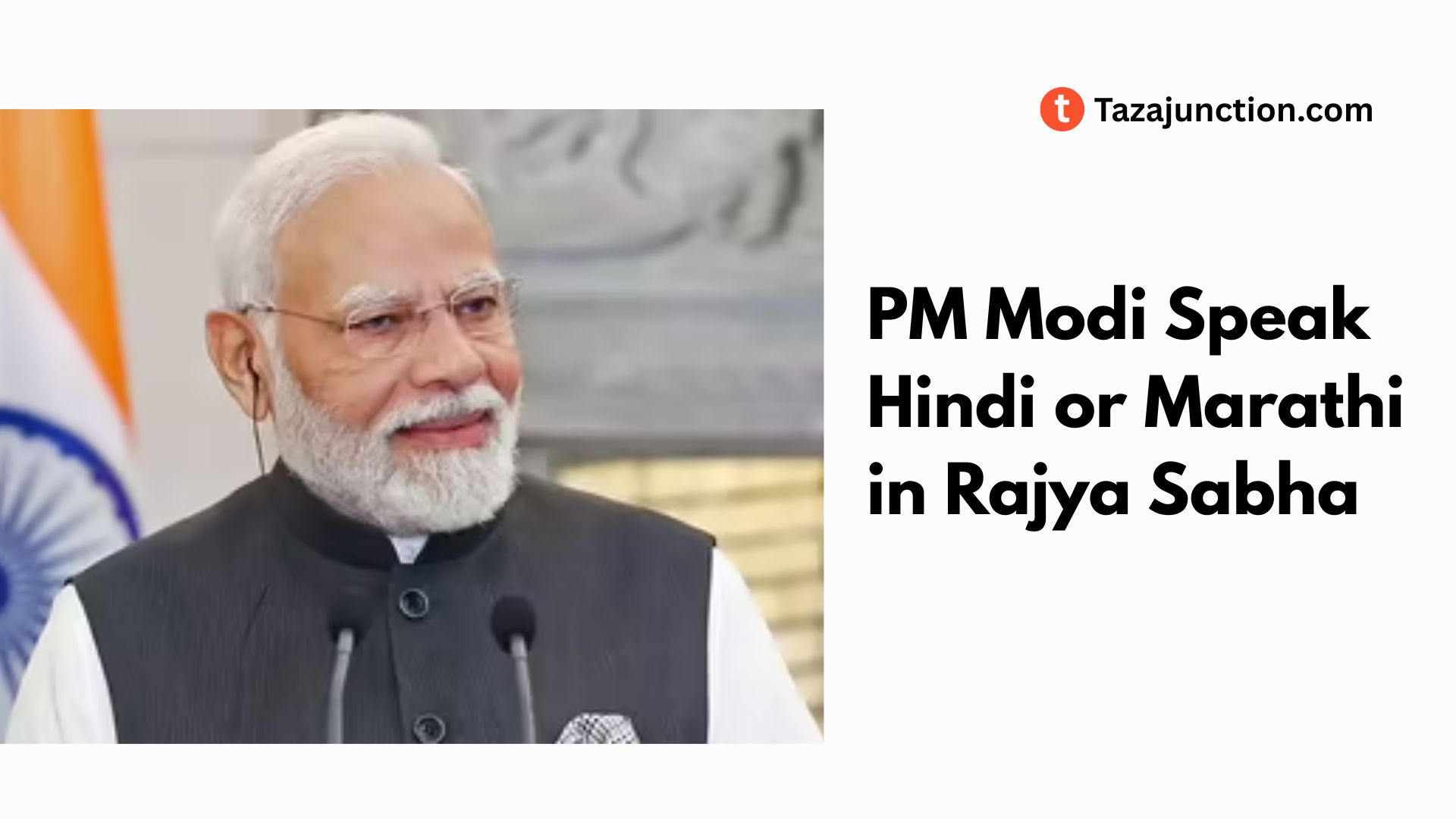In July 2025, when Ujjwal Nikam — a renowned lawyer known for leading the prosecution in the 26/11 Mumbai attacks — received a phone call from PM Modi, the exchange was meant to be ceremonial. But what stood out was Modi’s opening line: “Ujjwal ji, mi Marathit bolu ka Hindit bolu?” (Should I speak in Marathi or Hindi?).
While this might seem like a playful, respectful gesture, it stirred up a deeper debate on language politics in India — particularly, should the Prime Minister speak Marathi in the Rajya Sabha when addressing or engaging with members from Maharashtra?
If you are more curious about the Income Tax Return Filing Start Date, then you can read our article and get more info on it.
Table of Contents
1. Why Does Language Choice in Parliament Matter?
Constitutional Framework
India’s Constitution allows parliamentary debates in Hindi or English. However, members can use other scheduled languages if permitted by the Chair, provided translation support is available. This ensures accessibility and understanding across a linguistically diverse audience.
Cultural Significance
In a country where language is deeply tied to regional identity, such gestures take on political and emotional weight. Maharashtra has a long history of language-based identity movements. For many in the state, hearing Marathi in national forums like the Rajya Sabha feels like recognition of their heritage.
2. The Case for Hindi: The National Context
Wider Reach
Hindi is the most widely spoken language in India. As Prime Minister, PM Modi speaking in Hindi ensures that his message is understood by the majority of the nation. For Parliament, where clarity, reach, and uniform understanding are essential, Hindi serves as a common medium.
Parliamentary Convention
Traditionally, speeches in Rajya Sabha are delivered in Hindi or English. It maintains consistency, formality, and efficiency in parliamentary discourse. A shift from this could potentially lead to confusion unless translation systems are perfectly streamlined.
3. The Case for Marathi: Symbolism and Connection

Emotional Resonance
Speaking in Marathi, even briefly, is a powerful symbol of inclusion. It can make Marathi-speaking citizens feel acknowledged at the national level. For a leader, even a few words in a regional language can have a significant emotional impact.
Political Outreach
Maharashtra is a politically important state. Regional pride runs high, especially when it comes to language and culture. When the Prime Minister uses Marathi, it sends a message that the central government respects regional identities — something that could translate into electoral goodwill.
4. Risks and Challenges
Tokenism
A major risk is that such gestures could be seen as symbolic without substance — a form of political pandering. If not followed by real policy engagement or consistent cultural respect, it might be dismissed as hollow showmanship.
Precedent Concerns
If the Prime Minister starts speaking Marathi in the Rajya Sabha, will there be expectations to speak in Tamil while addressing Tamil Nadu, or in Bengali for West Bengal? While multilingualism is part of India’s DNA, operational challenges in a national forum like Parliament must be considered.
5. Reactions on PM Modi: Public and Political Perspectives
Appreciation and Criticism
Many Maharashtrians have expressed appreciation for PM Modi’s use of Marathi. It is seen as a respectful gesture. However, there are also those who feel that such acts should be backed by policy-level support for regional languages in education and governance.
Language Politics in Maharashtra
Language has long been a sensitive issue in Maharashtra. Political parties have campaigned on protecting Marathi language and culture, and tensions have often arisen over the prominence of Hindi or English in public life. In this context, the Prime Minister’s choice of language is carefully scrutinized.
6. Deeper Implications: More Than Just a Language Choice
Encouraging Linguistic Diversity
If leaders occasionally use regional languages in national spaces, it sets an example of inclusivity. It encourages younger generations to take pride in their mother tongue and promotes the idea that India’s unity lies in its diversity.
Strengthening National Integration
Rather than dividing, respectful use of regional languages by national leaders can foster stronger integration. It signals that every state, every culture, and every language has a voice and a place in the Indian Union.
7. Finding a Balanced Approach
Hybrid Speeches
One possible solution is for leaders like the Prime Minister to begin their speeches with a few lines in the regional language — as a gesture of respect — and then continue in Hindi or English. This hybrid approach can strike the right balance between symbolism and functionality.
Consistency in Messaging
While using Marathi is culturally significant, the core content should remain in a language that is understood by the majority of Parliament members and the country. This ensures that messaging remains coherent and consistent.
Conclusion
The question of whether PM Modi should speak Hindi or Marathi in Rajya Sabha touches on deeper themes — identity, inclusion, unity, and communication. In truth, both languages serve important purposes.
Speaking Marathi, even briefly, can be a powerful way to connect with the people of Maharashtra, showing that their language is valued at the highest levels of government. At the same time, Hindi remains a practical and widely understood language for conducting national discourse in Parliament.
Ultimately, a Prime Minister must be a communicator for the entire nation. By weaving regional respect with national responsibility, PM Modi — and other leaders — can build bridges through language, fostering a more inclusive and unified India.

